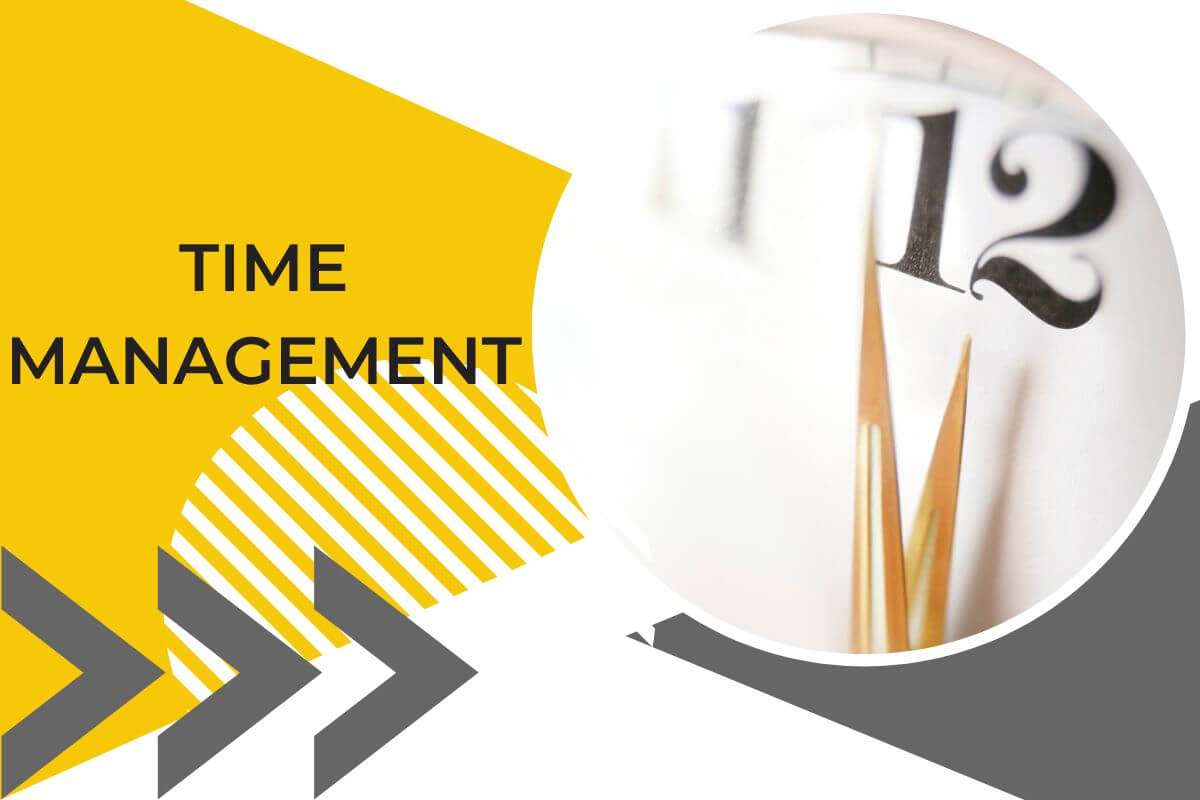
Every step towards better organization and efficiency brings long-term benefits. Be consistent, adaptable, and always open to learning new techniques. Your time is precious—use it wisely!
Do you know how exactly you spend your workday?
The first step in wise time management is a detailed workday analysis. Record all your activities throughout the day, from checking emails to attending meetings.
It's essential to identify what consumes most of your time. This can include frequent email checks, meetings that could have been emails, or excessive use of social media.
To get an accurate insight into your habits, it's best to use time-tracking applications such as Focus@Will, Clockify, or Toggl.
After analyzing the data, you can discover where you unnecessarily waste time and where you have opportunities for improvement.
To reduce or eliminate these major "time consumers," you can set specific time for emails and limit or completely eliminate social media use.
However, don't go to extremes – set realistic goals for each workday if you want effective time management.
Your goals should be SMART (Specific, Measurable, Achievable, Relevant, and Time-related).
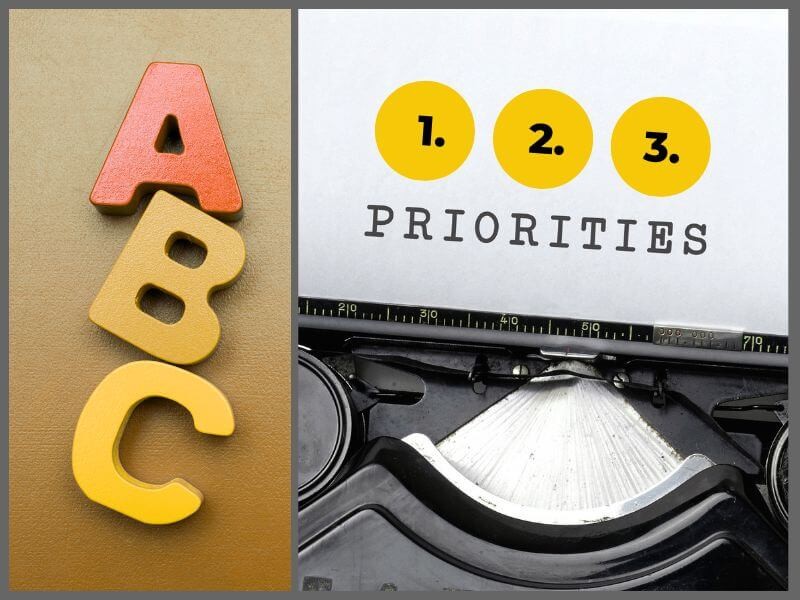
Setting priorities is a skill that requires practice. However, you must clearly determine what needs to be done immediately and what can wait.
Time management methods you can use include:
ABC analysis is a task management method that helps set priorities based on their importance and urgency. Tasks are divided into three categories:
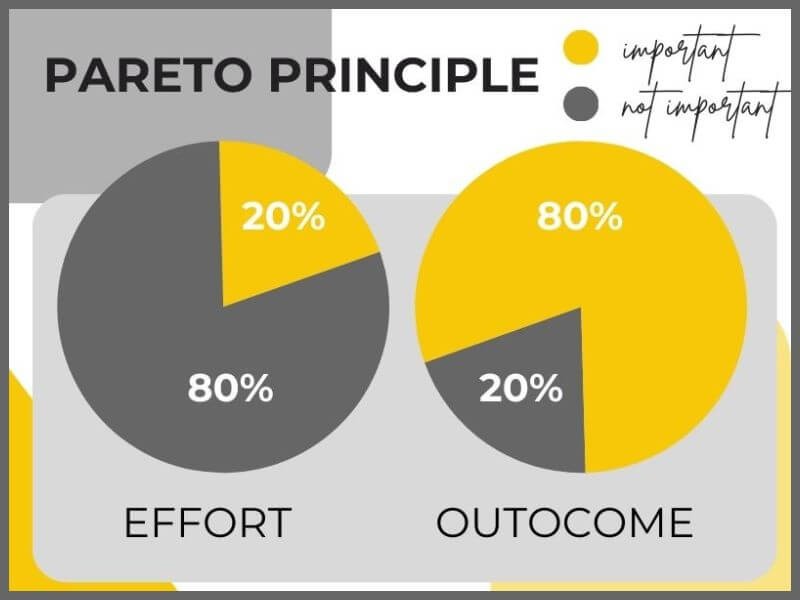
The Pareto Principle, known as the 80/20 rule, is named after the Italian economist Vilfredo Pareto. He observed that 80% of the wealth in Italy was owned by 20% of the population. This principle has since been widely applicable in life and business.
The basic idea of the Pareto Principle is that a small number of causes often contribute to most results.
Here's how you can apply the Pareto Principle in your daily work:
Example: Imagine working on a project involving ten different tasks. Using the Pareto Principle, you can analyze which tasks bring the most value.
You might find that two of those tasks yield 80% of the results. Instead of evenly distributing your time across all ten tasks, you can focus on these two key tasks and perform them best.
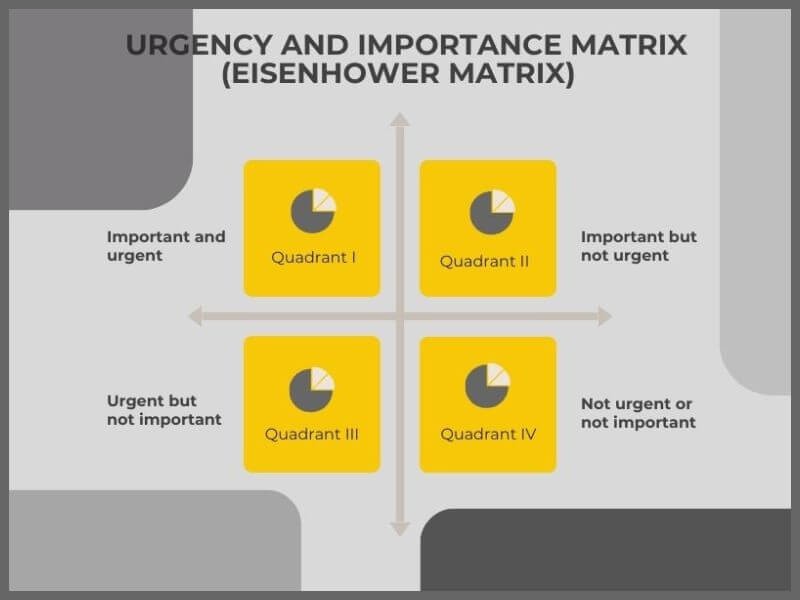
The Eisenhower matrix, also known as the urgency and importance matrix, was developed by former U.S. President Dwight D. Eisenhower.
This matrix helps categorize tasks, enabling better decision-making and increased productivity.
The matrix consists of four quadrants that divide tasks based on two criteria: urgency and importance.
Here's what each quadrant looks like:
You can use the Eisenhower matrix by:
Then, act according to the quadrants:
Combine the Eisenhower matrix with the Pareto principle for maximum efficiency. Focus on tasks that fall into Quadrant II and make up the key 20% of tasks that deliver 80% of results. This combination ensures you work on important tasks with the greatest impact.
Creating an effective daily plan starts with setting clear goals for the day.
Break down large tasks into smaller, manageable ones and schedule them into time blocks. Set time limits for each task to help maintain focus and prevent procrastination.
Use digital tools and calendars like Google Calendar, Trello, Asana, or Notion. These tools make planning, tracking, and organising your tasks easier. Be sure to set reminders and notifications to avoid forgetting important tasks.
Time blocking is a technique for pre-allocating specific time blocks to work on key tasks with full concentration and without interruptions. For example, you can reserve morning hours for projects requiring the most concentration. At the same time, afternoons can be dedicated to meetings and administrative tasks.
Distractions are one of the main enemies of productivity. Identify your most common distractions at work, whether a noisy work environment, social media notifications, or unexpected interruptions from colleagues. Becoming aware of these distractions is the first step toward reducing them.
Emails and communication tools can be major sources of interruption. To reduce interruptions, set specific times during the day (or multiple times) to check emails and respond to messages. Use filters and labels to organize emails and disable unnecessary notifications.
Quality time management also involves creating an optimal work environment to minimize disruptions. Use noise-cancelling headphones, establish a clear work schedule, and communicate with colleagues when you will be in complete focus and do not want to be disturbed.
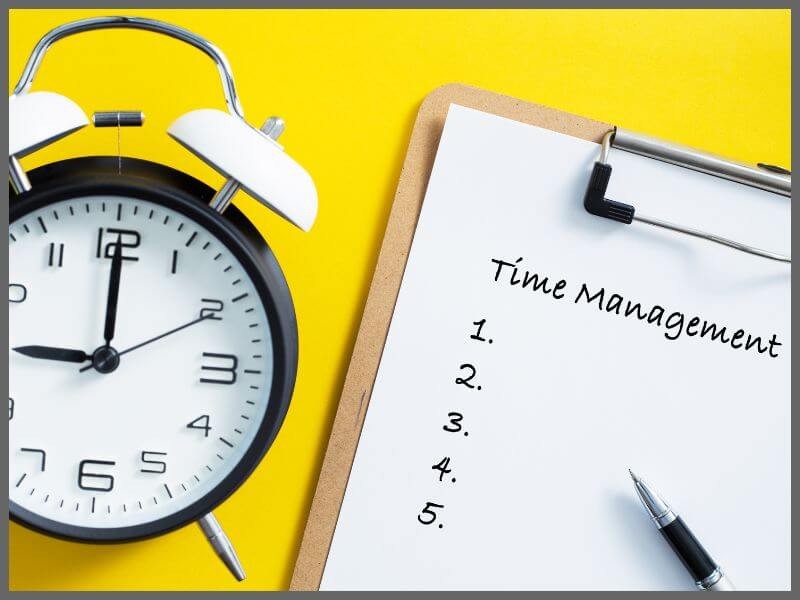
The Pomodoro Technique is a time management method developed by Francesco Cirillo, enabling efficient task completion through short, focused work periods.
It involves working in 25-minute intervals, known as "pomodori," followed by a short 5-minute break.
After four such pomodori, take a longer break of 15-30 minutes. This technique helps maintain focus, reduces fatigue, and increases productivity.
The Deep Work technique, popularized by Cal Newport, represents the ability to focus intensely on cognitively demanding tasks without distractions. The goal is to achieve maximum productivity and quality of work.
Main segments of the Deep Work technique:
It is essential to know how to manage your energy. Identify when you have the most energy during the day and direct that time to the most important tasks.
Plan less demanding tasks for when your concentration is lower.
Short breaks throughout the workday help increase concentration and prevent burnout.
If possible, take breaks for short walks, stretching, or meditation to return to work with "recharged batteries."
Regular hydration, a healthy diet, and adequate sleep are also crucial for maintaining a high energy level.
Although multitasking may seem like a productive method, research shows the opposite.
Switching from one task to another reduces overall efficiency and increases the time needed to complete tasks. It also raises stress and fatigue, which negatively impacts productivity in the long term.
How to focus on one task?
Focusing on one task at a time is known as monotasking.
You must create an environment that supports focused work using techniques such as Pomodoro or Deep Work.
You will achieve complete concentration and efficiency only if you set clear goals and time limits for each task.
Bill Gates and Warren Buffett are known for their monotasking, focusing on one task at a time. Their success partly stems from their ability to dedicate themselves to one thing and perfect it before moving on to the next.

Delegation is also essential for effective time management.
Identify tasks that are not immediately important to you (are not essential or are not in your job description) and can be entrusted to others.
Effective communication within the team is the foundation of success. You need to clearly define tasks, expectations, and deadlines.
Trust among team members is built through consistent communication and support, resulting in better teamwork and increased productivity.
Numerous tools (Trello, Asana, Slack, Microsoft Teams, and Notion) can facilitate teamwork and significantly improve team efficiency and cohesion.
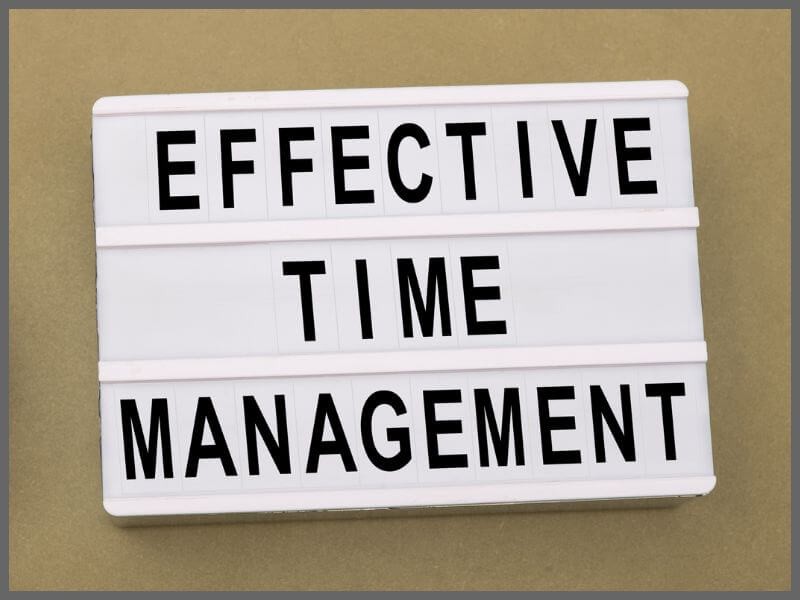
Stress is an everyday companion to work, but some techniques can help reduce it.
Regular physical activity, meditation, journaling, and spending time with loved ones can significantly lower stress levels.
Regular activity not only improves your physical health but also your mental well-being.
Hobbies that bring you joy are an excellent way to relax and recharge.
In conclusion, intelligent time management at work involves:
Implement some of these strategies into your workday and observe how your productivity (and personal satisfaction) increases.
Experiment with different techniques and adjust them to your needs and work environment.
We haven't mentioned one more crucial point – set clear boundaries between work and personal life. Organize your working hours and stick to them.
Learn to say "no" when necessary to protect your private time and, consequently, yourself.
Remember, time management is a continuous journey.